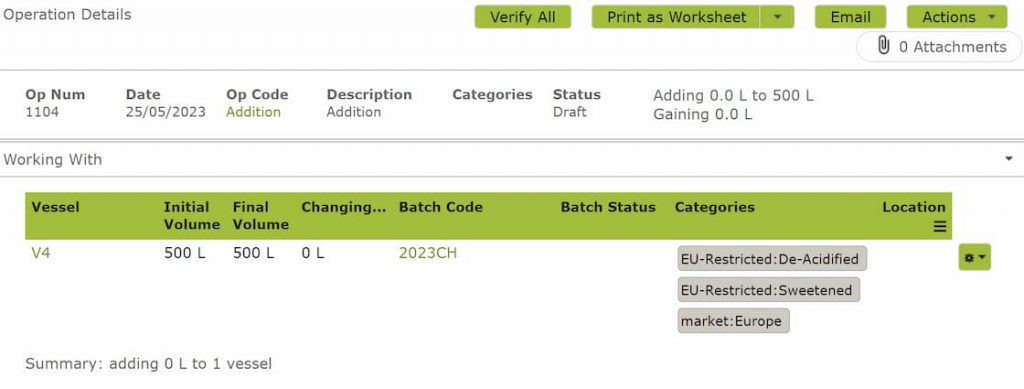Using Categories for Traceability
Overview
When making products you may have certain specifications or target products in mind that require you to be careful with the manufacturing process and additives that you use. Vinsight has introduced a range of features to help you manage this before you do operations and see this information at a time-critical point.In this document:
Examples
Below are some useful examples of how to use Categories for traceability.
Some common examples of these might be:
Organics, where you take fruit from an organic supply and you wish to be able to label your finished product as Organic, and therefore you need to easily identify which batches are to be treated as Organic and also with processes and additives that might be compatible or incompatible with this.
Another example might be selling products into a particular export market that has stringent specifications like Europe. In this case, it would be good to be able to label your batch as being targeted at the European market early in the process, and also track any additives or processes that might stop you meeting those standards.
Vinsight has introduced a few features that help with this.
- You can add categories to Stock Items used as additives that highlight important information e.g. allergens:Sulphites, or EU-Restricted:Sweetening or Organic:Prohibited etc.
- Vessels now have categories specific to the specific tank (as opposed to the batch across many vessels) so you can see important attributes about that specific vessel.
- You can flag whether you want these additive categories copied to Bulk or Packaging Operations when you use them. This allows you to a) see the attributes of the existing vessel eg: organic:certified, and b) see the important attributes you have flagged about the additives you are about to use eg: organic:prohibited. This will allow you to catch issues before you do operations.
Click here for a detailed guide on how to setup these Categories and explanation
Organics Example
You can start with Categories in Harvest Entries (or Bulk Receivals)

When you create (or allocate) to an Operation it carries the Categories to the Operation
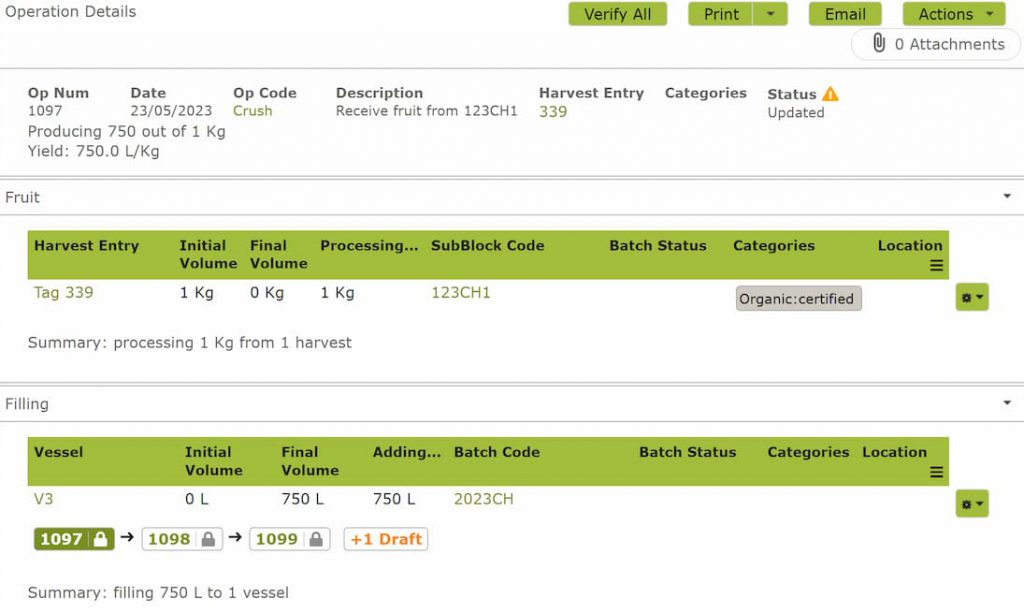
Using V3 with an addition that has the same Category
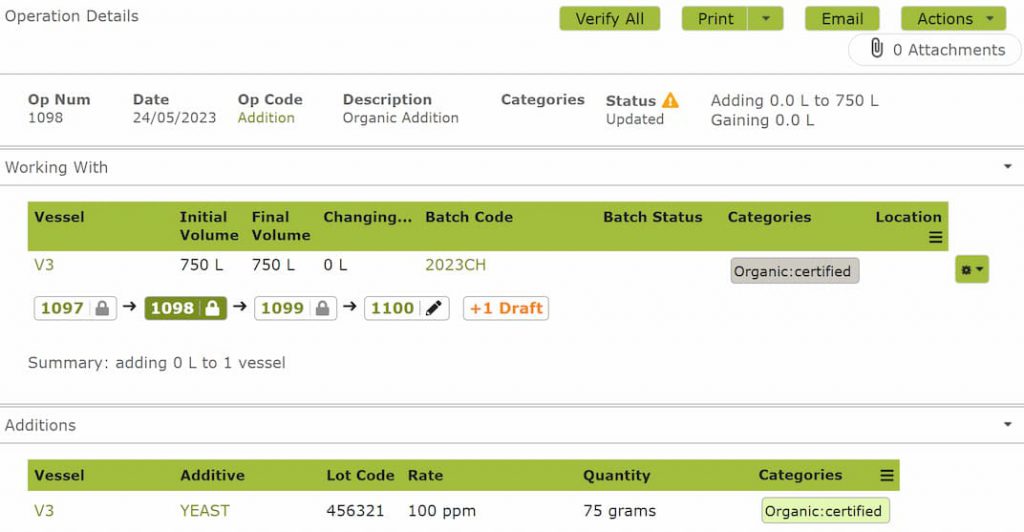
Using V3 with an addition that has “Organic:prohibited” as a Category
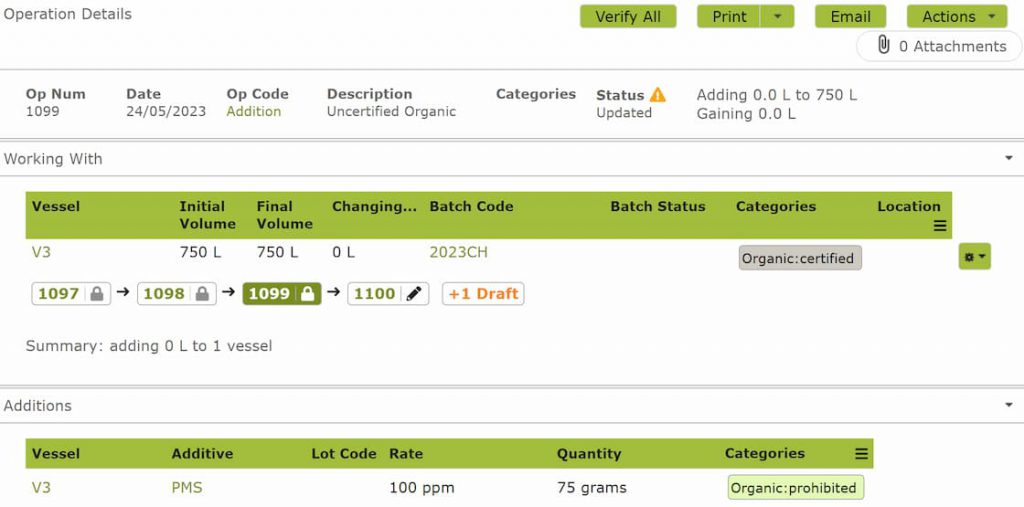
There is no mechanism to stop you from proceeding with the previous operation, but by having all the important information in one place on the operation this will allow you to make informed decisions about possible problems, eg the use of non-certified or prohibited items with certain blends.
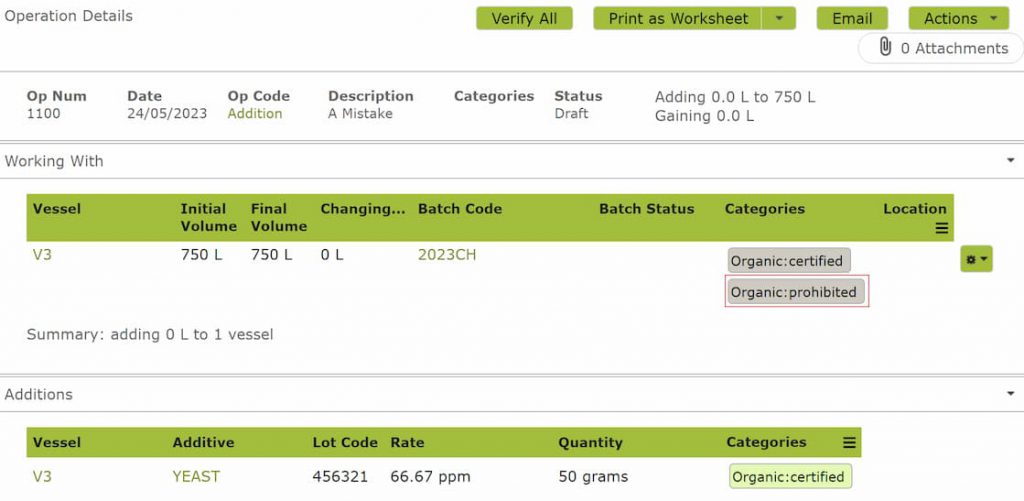
EU Restrictions Example
Start off with a market Category to specify where you are going to sell the wine to.
Additions have Categories that are specific restrictions to the market you are selling to.
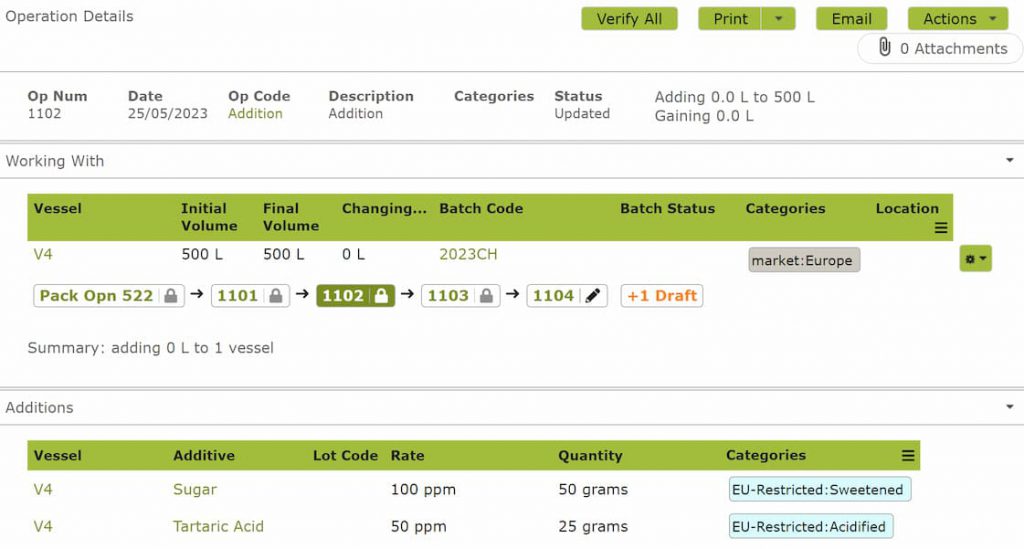
You can also edit Categories within a Vessel to change specifications and restrictions around
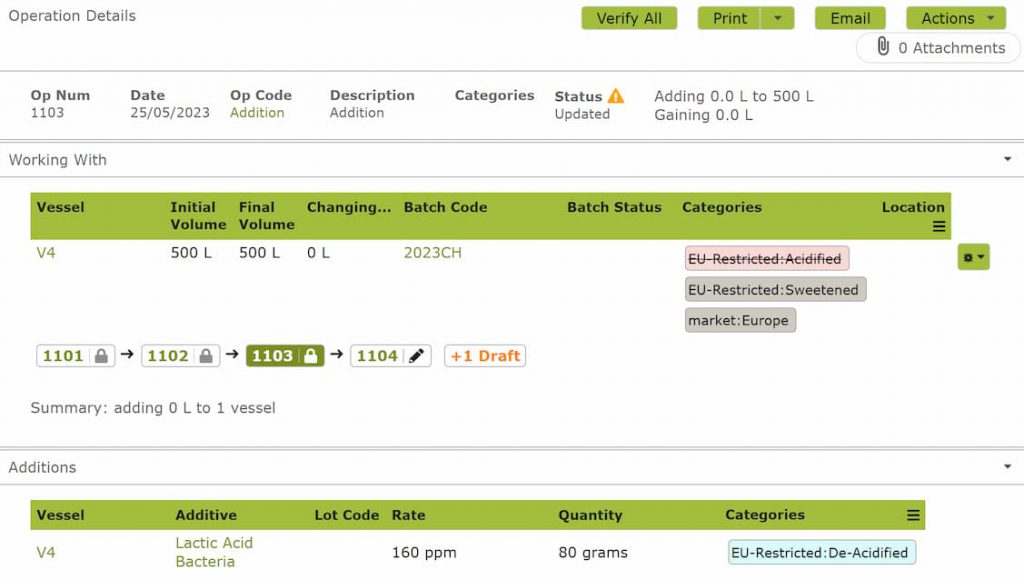
What V4 looks like after the edits
